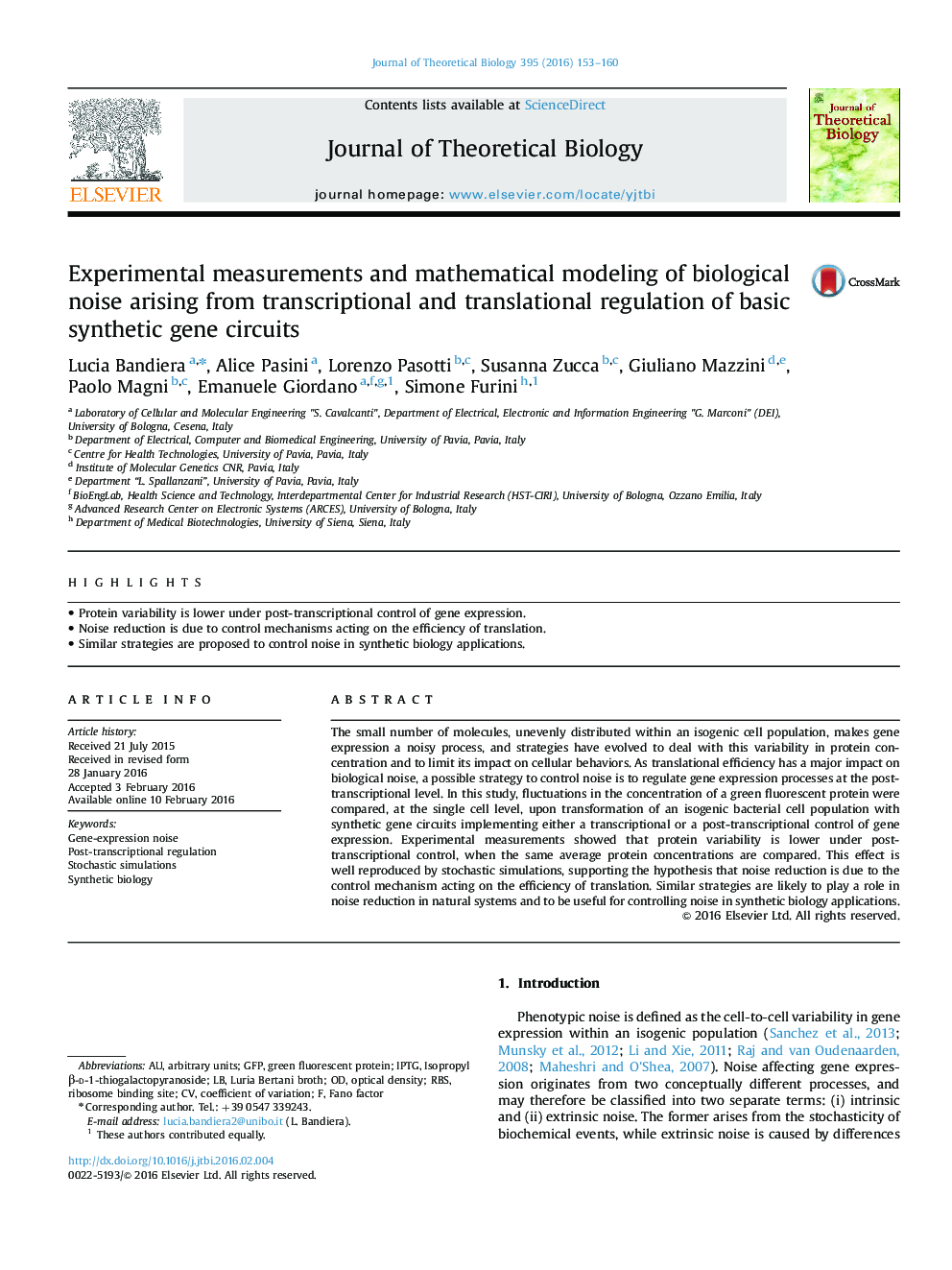| Article ID | Journal | Published Year | Pages | File Type |
|---|---|---|---|---|
| 4495844 | Journal of Theoretical Biology | 2016 | 8 Pages |
•Protein variability is lower under post-transcriptional control of gene expression.•Noise reduction is due to control mechanisms acting on the efficiency of translation.•Similar strategies are proposed to control noise in synthetic biology applications.
The small number of molecules, unevenly distributed within an isogenic cell population, makes gene expression a noisy process, and strategies have evolved to deal with this variability in protein concentration and to limit its impact on cellular behaviors. As translational efficiency has a major impact on biological noise, a possible strategy to control noise is to regulate gene expression processes at the post-transcriptional level. In this study, fluctuations in the concentration of a green fluorescent protein were compared, at the single cell level, upon transformation of an isogenic bacterial cell population with synthetic gene circuits implementing either a transcriptional or a post-transcriptional control of gene expression. Experimental measurements showed that protein variability is lower under post-transcriptional control, when the same average protein concentrations are compared. This effect is well reproduced by stochastic simulations, supporting the hypothesis that noise reduction is due to the control mechanism acting on the efficiency of translation. Similar strategies are likely to play a role in noise reduction in natural systems and to be useful for controlling noise in synthetic biology applications.
